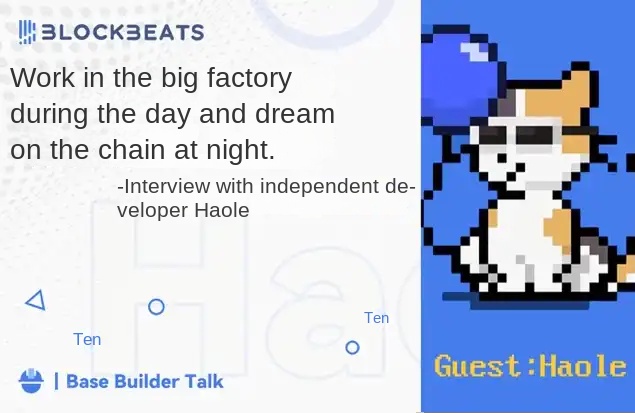Distinguishing Walrus from the existing storage protocols and Breaking Through Traditional Limitations
Article Author: @Steve_4P, the article represents the author's views only.
Key Points Summary
· Mysten Labs has successfully launched the Sui Network and DeepBook Protocol and is now preparing to launch a new project—the Walrus Protocol.
· Despite the decentralized storage market having many protocols, Walrus has garnered widespread attention due to the following two points:
(1) Cost-effectiveness and Security: Walrus is more cost-effective and secure compared to existing storage solutions.
(2) Programmability: It allows data stored to be programmable through the Sui Network.
· As one of the most advanced projects in existing decentralized storage protocols, Walrus is highly anticipated for its future utility and value.
1. Background—Why Walrus? Why Launch Now?
Mysten Labs has successfully launched the Sui Network and DeepBook Protocol and is now venturing into a new domain—the Walrus Protocol. The success of the Sui Network and DeepBook has built up significant anticipation for the Walrus project. However, despite the enthusiasm, there are also some concerns surrounding the Walrus Protocol.
These concerns stem from several factors: there are already many decentralized storage solutions in the market, with many not achieving ideal performance; and there are concerns about resource allocation—especially whether Mysten Labs will dilute resources due to continuing the development and growth of the Sui Network, affecting the progress of the new project.
Therefore, we will explore the structure of the Walrus Protocol, analyze its differences from existing decentralized storage solutions, and further investigate the relationship between Walrus and the Sui Network, focusing on how Walrus integrates with the Sui architecture to enhance the overall value of the Sui ecosystem.
1.1 Walrus vs. Existing Storage Solutions
To explain why Walrus needs to exist, we first need to discuss its differences from existing decentralized distributed storage solutions. From my perspective, there are three main differences between Walrus and the current storage models (especially Filecoin and Arweave), which can be summarized as follows:
1.1.1 Storage Cost Efficiency

First and foremost, there is a significant difference in storage costs between Walrus, Arweave, and Filecoin. As discussed by the Four Pillars in the Walrus article, Arweave employs a system where all nodes must replicate and store all data, while Filecoin allows users to decide how many nodes store their data (users can choose to have data stored by just one miner or spread 100 copies of the data across 100 miners. Clearly, the more miners storing the data, the higher the cost).
In comparison, Walrus utilizes Red-Stuff encoding, demonstrating lower costs compared to Arweave and Filecoin, with efficiency levels up to 100 times higher than them (in comparison to Arweave, which requires full-network data storage resulting in up to 500 times replication costs, Walrus only requires 4-5 times replication). At the same time, the probability of data loss is significantly reduced.
In simple terms, Walrus addresses the shortcomings of Arweave and Filecoin. While Arweave has a low probability of data loss, it incurs high replication costs; Filecoin, on the other hand, offers relatively cheap storage based on user demand, but low-cost options may come with higher data loss risks; Walrus, by maintaining low replication costs while maximizing the reduction in data loss probability, combines the strengths of both.
Additionally, for Arweave, as the number of nodes increases, so does the cost (although not linearly) because it encourages all nodes/specified nodes to store as much full data as possible. In contrast, Walrus only requires one-time network data transmission, with each node storing partial data, which actually alleviates the burden on individual nodes as the network grows. This structural difference makes Walrus' storage costs significantly more efficient than Arweave and Filecoin.
1.1.2 Programmability
While efficiency compared to Arweave and Filecoin is crucial for Walrus, its most significant difference from existing storage models is its "programmability." Traditional storage is merely a simple data repository, while Walrus achieves programmable decentralized storage through the Sui Network, giving stored data more functionality.
What if smart contracts could directly reference or trigger data stored in decentralized storage? For example, when minting an NFT, the image file can be stored in Walrus, and its blob data object can be created on the Sui Network, linking it to the NFT object. This solves the traditional NFT's "incompleteness" issue (where traditional NFTs store tokens on-chain but the NFT's art metadata is stored off-chain), making NFTs through Walrus true Web3 assets.
Another example directly related to data storage is that, since Walrus's blob data can be stored as a Sui object in Sui object storage and controlled by Sui's Move smart contract, the smart contract can transfer the stored data to other users or automatically change ownership. This is why we say the data in Walrus is programmable.
In contrast, Arweave and Filecoin are very limited in terms of dynamic integration with on-chain applications, or can even be said to be nearly impossible. Although Filecoin has added some smart contract functionality through the FVM (Filecoin Virtual Machine), the ability to modify and control data is still limited, and Walrus is clearly superior to these two protocols in terms of programmability.
1.1.3 Data Access and Deletion
Existing storage protocols have a characteristic: once data is uploaded, it can be accessed by anyone and cannot be deleted. While this characteristic may be useful for individual users, it poses significant limitations for institutions and businesses that need to store sensitive data or need to modify/delete data. In contrast, Walrus allows users to discard or modify their data when needed (this is different from Arweave, where data cannot be deleted or modified; and different from Filecoin, where data deletion is not at the user's request, but occurs when the contract expires or when the data hosting node goes offline).
Some may be concerned that this conflicts with the immutability principle of blockchain, but it is important to remember that in Walrus, what is deleted is blob data. Transaction data unrelated to the deletion of blob data remains intact, and deleting blob data does not affect the integrity of the blockchain.
Compared to traditional storage, this enhanced practicality of Walrus significantly increases its application potential in traditional enterprises and Web2 enterprises, further raising market expectations for its diversity.
1.2 Collaboration Between Walrus and the Sui Network
After discussing the differences between Walrus and existing storage protocols, let's now explore the relationship between Walrus and the Sui network. When Mysten Labs announced their plans to launch the Walrus protocol, many questioned this, saying, "They should focus on Sui instead of creating another new protocol." However, as soon as you have a basic understanding of how Walrus operates, it becomes clear that Walrus does not distract from the focus on Sui; instead, it should be seen as a storage stack designed to enhance applications on Sui. In other words, Walrus not only complements the Sui network from a storage perspective but also actively influences the governance token SUI of the Sui network, making the two inseparable. Next, we will delve further into this point.
1.2.1 Symbiotic Relationship between Sui and Walrus
In fact, Mysten Labs was very attentive to the storage issue during the early design phase of Sui. The blockchain inevitably grows as it is used, which could lead to increased transaction fees for future Sui network users. Therefore, from the early design stages of Sui, Mysten Labs proposed a unique storage fund concept to address Sui's storage challenge.

The operation of the Sui Storage Fund is as follows: The fees users submit to Sui validation nodes are divided into two parts: 1) Gas fees related to computation, and 2) storage fees for data storage. Sui charges storage fees in advance when users upload data, transferring these funds to the storage fund. The storage fund will continue to allocate these funds to validation nodes as long as the data is stored on the chain. Additionally, if users delete data, they can receive a refund of the storage fee.
Sui's unique on-chain data storage system has produced two main effects:
1. Users can receive a refund of the storage fee when deleting on-chain data, creating an economic incentive to reduce the distributed ledger's capacity.
2. The system addresses storage-related sustainability issues by precharging storage fees and using them as rewards for future validation nodes.
Although Sui has addressed sustainability issues through this unique structure, storing large-scale blob data (such as media files) on-chain remains a burden. This is where Walrus comes in—Walrus stores large-scale blob data, and its metadata is object-managed on Sui, enabling programmability without directly storing it on Sui.

Furthermore, Walrus has achieved the most distinctive feature compared to other storage protocols through Sui—making stored data programmable and controllable. Ultimately, a symbiotic relationship has been established between Sui and Walrus, where both complement each other's shortcomings, creating unique advantages.
1.2.2 Walrus Makes SUI a Deflationary Asset
From the example of the storage fund, we can see that the Sui network requires a certain amount of SUI to be paid as the storage fee for storing any object, and Walrus is no exception. When creating a blob data object in Walrus, SUI is locked in the storage fund based on the object's size (referring to the object's size representing the blob, not the actual blob size).
While some fees can be refunded by deleting data, a portion of the fees will incur a burn effect, reducing the circulation supply by permanently removing tokens. In other words, the more data stored through Walrus, the more SUI will be permanently locked in the storage fund, creating a positive feedback loop where the use of Walrus increases, leading to a decrease in SUI circulation.
In summary, the emergence of Walrus is a positive development for the Sui network, both at the network and asset levels. It is expected that through Walrus, the Sui ecosystem will evolve towards a more diverse direction.
2. Conclusion - Walrus Will Become the Key Protocol of Sui
2.1 Mysten Labs Is Not Just Building a Blockchain
When Mysten Labs was first founded, I thought it was just a company focused on the Sui network. However, upon seeing the launch of services like Deepbook and SuiNS, I began to ponder what vision Mysten Labs was truly pursuing. When I encountered Walrus, I realized their goal is to build a complete Web3 decentralized infrastructure.
Compared to other companies, Mysten Labs has a different time horizon when looking at this industry. They are not just about token issuance, creating hype, and quick exits; instead, they have a vision to lead innovation in areas such as execution, storage, consensus, and communication, while understanding user inertia towards Web2 services, building the most suitable UI for them.
The Sui network handles execution and consensus (evolving through projects like Mysticeti, Pilotfish, and Remora), storage is handled by Walrus, communication by SCION (a next-generation internet architecture capable of protecting network packets, well-known for its DDoS protection and attack-resistant routing—note that SCION is not created by Mysten Labs but will be applied in the Sui network), and the Web2-esque UI managed by zkLogin, Stashed, SEAL, and KELP.
If these plans can all successfully materialize, I believe Mysten Labs can reshape the existing Web3 paradigm. My initial thought was limited; Mysten Labs is not just looking to build a blockchain—they are a team building infrastructure for the new web. Of course, I see Sui at the core of Mysten Labs' vision, with other projects playing complementary roles. Walrus is no different, and in my view, Walrus may be the most critical protocol among them.
2.2 Walrus Not Limited to the Sui Ecosystem
However, Walrus is not limited to the Sui ecosystem. Like other storage protocols, Walrus can be used by any third party, not just Sui applications. It may even serve as a strong alternative to existing storage protocols or as a solution for other DA layers (such as Celestia, EigenDA, Avail).
This availability of Walrus extends the demand for SUI beyond the Sui network. When Walrus is utilized, data objects are created on the Sui network, leading to a reduction in SUI circulation. In other words, Walrus has the potential to make SUI a more attractive asset by creating external demand (this is not investment advice but a structurally plausible scenario). Therefore, Walrus is poised to be a bridge, expanding Sui in various directions.
2.3 Can Walrus Surpass Filecoin?
While caution is needed when comparing the value of specific protocols, I am very optimistic about the future of Walrus because: 1) its operation mechanism is much more efficient than existing storage protocols, 2) it can perform tasks that existing storage protocols cannot accomplish (such as being a DA or making storage data programmable), 3) it already has a strong network and user base through the Sui network.
If Walrus, as envisioned by Mysten Labs, becomes not just the storage layer of the Sui network but a representative storage protocol of Web3, it could become the leading protocol in the storage field.
This article is contributed content and does not represent the views of BlockBeats
Welcome to join the official BlockBeats community:
Telegram Subscription Group: https://t.me/theblockbeats
Telegram Discussion Group: https://t.me/BlockBeats_App
Official Twitter Account: https://twitter.com/BlockBeatsAsia
 Forum
Forum OPRR
OPRR Finance
Finance
 Specials
Specials
 On-chain Eco
On-chain Eco
 Entry
Entry
 Podcasts
Podcasts
 Data
Data

 Summarized by AI
Summarized by AI







